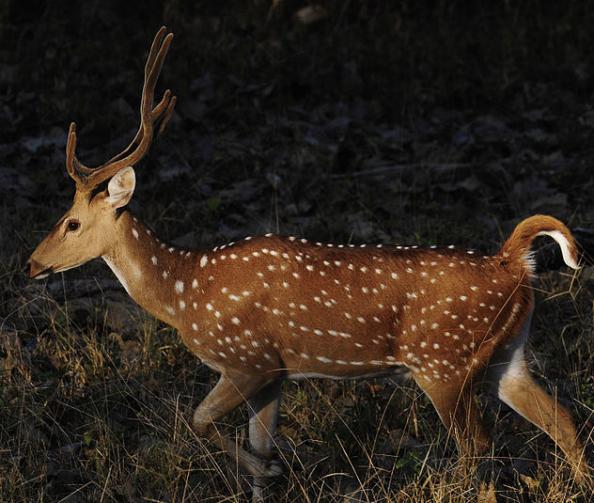While Hawaii has no hunt-able native game animals, axis deer were introduced here decades ago. According to Ed Johnson, Wildlife Biologist and State Hunting Coordinator for the Hawaii Division of Forestry & Wildlife, three of the Hawaiian Islands, Maui, Lana’i, and Moloka’I, have axis deer (introduced in 1868 from India), while a small herd of blacktails can be found on Kaua’I, brought in from Oregon in the early 1960’s.
“There are no solid estimates are available for general deer numbers, as the state is plagued by a lack of jurisdiction over game mammals on private land,” says Johnson. “Hence surveys are confined to public lands, and [even] on the island with likely the highest number of deer, Maui, most of those deer are found on private lands.”
With that caveat, Johnson adds, “Four to five thousand animals are estimated by the Maui District office of Forestry and Wildlife, based on the public lands surveyed. 3500 to 4000 animals are estimated on the public hunting areas of Lana’i, and no current estimates are available for Moloka’i.”
On Lana’i, axis deer are managed on leased, private agricultural lands, and the deer are seen as a real plus to landowners. That’s because, “the hunting season is boon to the local economy,” Johnson said. “Up to 4,000 hunters from around Hawaii and from dozens of other states and countries participate in a lottery which assigns one of nine weekends to hunters. The herd is managed largely by the number of days the season is open and the bag limits. A single allowable deer for the season will result in plus or minus 350 harvested for the season. A bag limit of two increases that to right around 700 animals harvested.”
On Moloka’i, axis deer may be taken year round, and are hunted mostly by locals.
Kaua’i’s blacktail herd is stable at about 1,000 animals, with only 35 to 50 harvested annually.
The Western Regional Report
_A very dry summer in the Southwest shriveled up forage and made it hard for does to successfully drop and raise fawns. However, new deer browse is starting to appear in the burned-over areas from 2011’s wildfires in Arizona and New Mexico.
Things are trending up for deer in the Northern Rockies, after horrendous winters starting in 2007-2008. A mild and generally snowless 2011-2012 winter helped Idaho mule deer and whitetail numbers begin to rebound–though it might take another year or two for that growth to be reflected in the harvest. Wyoming suffered from a decade-long drought, but the last two years have seen a return of the rains, and deer habitat is turning around. Montana’s deer have been hit hard by harsh winters and a major EHD outbreak last year, which took out thousands of trophy whitetails, especially along the Milk River corridor._
Top Trophy Zones
AZ: Units 3C, 12A, 13A, 13B, and 24A.
CA: Humboldt, Mendocino, Siskiyou, and Trinity counties.
CO: Units 25 and 26.
ID: Benewah, Bonner, Boundary, and Kootenai counties.
MT: Fergus, Madison, Missoula, and Ravalli counties.
NM: Units 32 and 33 for mule deer; units 21, 22, 23, 24, and 27 for Coues.
OR: Clackamas, Grant, and Jackson counties.
WA: Chelan, Ferry, Lewis, Spokane, and Stevens counties.
WY: Bighorn, Crook, Lincoln, and Sheridan counties.
